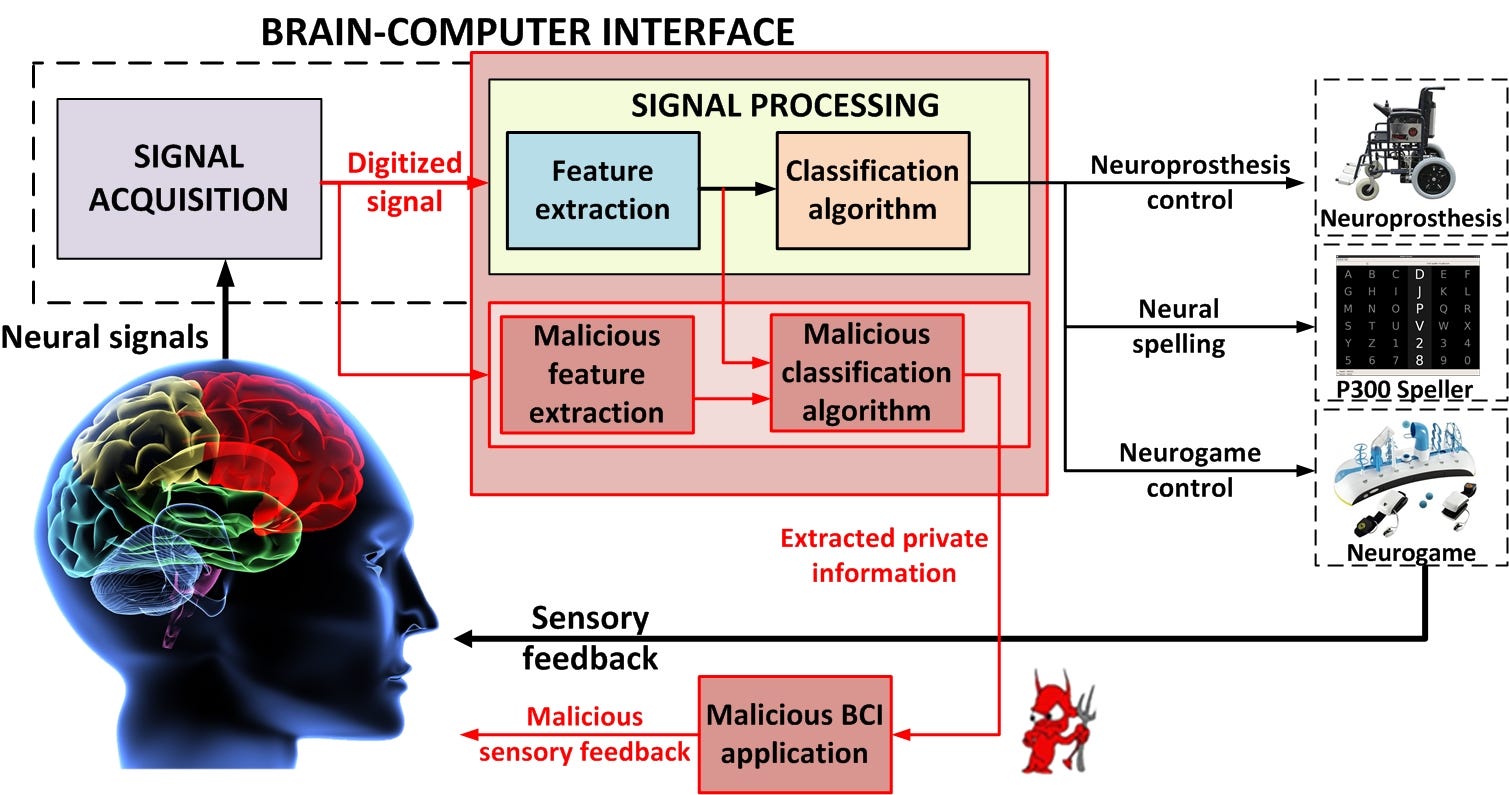Computer Interfaces and the Human Machine
We are well on our way as Homo sapiens to becoming a species that fully merges technology with our organic bodies. In some ways, we’ve been getting at this for centuries already, beginning with the first use of eyeglasses, at the end of the thirteenth century in Italy, to improve vision by making it easy for someone to wear two magnifying lenses on the bridge of their nose.
But ever since the invention of the computer and the first human-machine interfaces were born (HMIs), a dream of many technologists has been to create direct connections between computers and the human brain. These brain-computer interfaces (BCIs) would eliminate the lag inherent in the translation between thought → physical action → computer response. BCIs also allow people who cannot perform physical actions required for HMIs to bypass that real-world step and directly control powerful computer tools with the electrical impulses in their brains.
One of the dreams is that BCIs will eventually place the entire canon of human knowledge within the realm of immediate recall: No more searching the internet via typing or voice commands needed. In a near future, we will be able to think about what we need and pull whatever relevant information is available directly from a cloud and into the forefront of our minds.
BCIs work because we are able to detect the signals sent between neurons in our brains between the dendrites and axons connecting them. These tiny bits are the differences in electrical potential expressed by ions on every neuron. Scientists can find and measure these signals using implantable electrodes.
The signals become digital information which is then translated by algorithms that have been developed over many years of painstaking research and experimentation. Thus, our brain’s signals become a director for machine intelligence that can then be used to control specially-enabled prosthetic limbs and wheelchairs and move cursors and click buttons on monitors. The software can also be trained to recognize the signals that account for very specific “thoughts” that represent numbers and letters, which enables writing (of a sort) for people otherwise unable to physically write.
Just like any software application, though, BCIs are susceptible to hacking, as already shown in some intentional attempts at malicious brain-spyware creation. If a BCI can move numbers and letters across a digital gulf, it isn’t going to be difficult for someone to hijack that data and be able to translate whether it represents a banking PIN or a social security number.


While the holy grail for the medical community is to use BCIs in neuroprosthetics to change the lives of disabled people for the better (even to the point of the mind-controlled exoskeleton a soccer player used to kick-off the 2014 World Cup), an entire ecosystem of business opportunities is growing around this cutting edge technology:
— Kernel is capturing memories from the hippocampus, reading them with AI and “recording” them with up to 80% accuracy.
— Elon Musk’s Neuralink initiatives aim to create implantable interfaces between the brain and computers. The early goals will be to offer treatments for brain and nervous system disorders, with the eventual path leading to enhancing normally-functioning brains — i.e. increasing memory and processing speed, adding built-in cloud and internet access, and expanding our senses.
— A company called Foc.us is marketing “brain stimulators” to improve reaction speeds for gamers.
— Neuropace is working on ways to predict, detect and stop the signals sent among neurons that cause seizures.

— Mindmaze is creating a motion-capture VR/AR game system to give paralyzed people a more full experience, while Neurable is using similar tech to give people the ability to control toys and games with their thoughts.
— The Pittsburgh-based startup Cerêve has already secured commercial clearance from the FDA to sell their “Sleep System” that can ameliorate insomnia.
— Brainco is making wearable devices that will help teachers monitor the level of focus their students have in the classroom and better find and help those students with learning difficulties.
There are a number of ethical considerations that come along for the ride with the implementation of BCIs. One big one, which is evident across almost all technological breakthroughs, is the further stratification of society. There will be those people who can afford BCIs that can improve their lives drastically — whether for strictly medical reasons or to enhance human performance and quality of life in other ways.


Yet another, and somewhat more immediately worrying for most of us, is that this technology essentially creates a bridge between the human mind and the outside world that might be manipulated by those with dark purposes. Plowing ahead at full-speed without devoting tremendous effort, concern and diligence toward keeping the information in our brains safe — as well as the physical structure itself — will lead to some truly terrible outcomes. If software can be hijacked, and now the brain is a part of that software, might we see people themselves being hijacked by hackers and terrorists? Could a new kind of computer virus be engineered to create deleterious effects in the biology of a human mind and body?
Every new and extremely powerful technological advance comes with the potential for amazingly good as well as nightmarishly bad results. Atomic power, satellites, genetic engineering, artificial intelligence: Brain-computer interfaces are no different. It only takes supremely smart people to make these great things, but it takes good and ethical smart people to monitor them and make sure the human race is not threatened by such inventions.
Thank you for reading and sharing!
